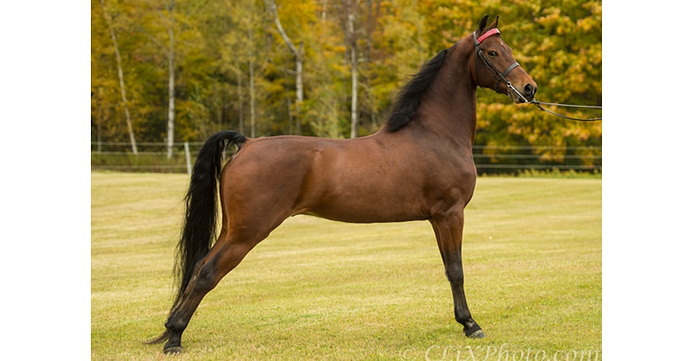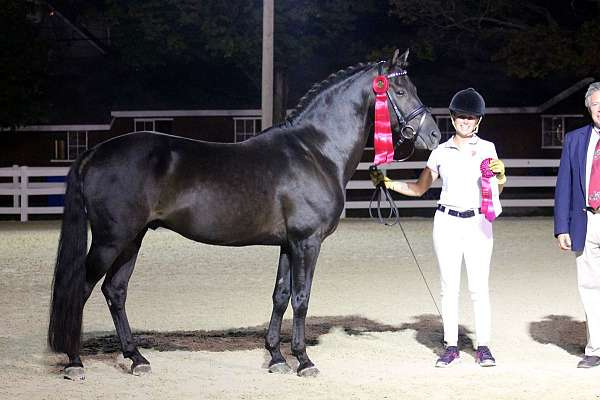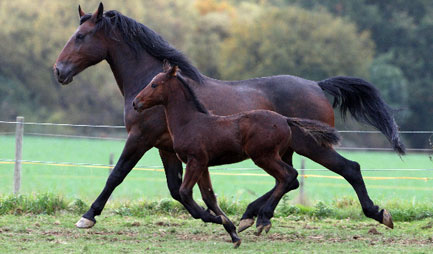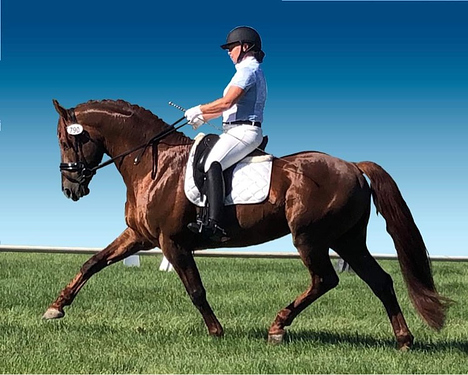@Arlomine Are you very familiar PERSONALLY with several Cleveland Bay stallions and their produce out of various mares? There really are not many draft bodied CB stallions around. And what the stallion looks like standing still, is seldom a hint of what he can do moving. They are big, in bone, girth, body size, but they CAN move lightly and so can their foals.
Crossbred foals are seldom as bulky as the pure CBs. They usually will jump like deer, do elegant dressage, cover ground with long strides, while being comfortable to sit. Clevelands can be used in any discipline, though maybe not superior in reining, they do well as ranch horses, trail horses too. Many are multi-skilled, change the saddle, he jumps today, trail ride tomorrow, Combined Driving horse on the weekend. This is a horse who is flexible, agile, cooperative!
The genetics are very tight on Clevelands, so the stallions are very prepotent. They throw themselves strongly, foals are like Daddy. Mares do have traits passed on, but Cleveland partbreds usually have a “Cleveland-ish” look to those familiar with the breed. Clevelands tend to have excellent feet and hooves, proportionate to their size. Nice minds, like being with people when well handled from a young age.
Have to say you CANNOT believe everything you read about ANY BREED that is written in books! There is a lot of misinformation put before the public, who often take it for gospel truth! And as one author reads other authors, misinformation gets passed on, spread wider. Few authors actually are very familiar with or ever met any individual animals of the many rare horse breeds they write about! Could not tell breeds apart in a lineup of horses!!
The USDA records all classify Clevelands as a draft breed because of a mis-spelling in hearing UK English pronunciation of draught, sounding like American English draft. Big breed, must be a draft breed! WRONG. UK English word draught means it pulls loads, carriages, as well as being ridden. Not nessessarily being a plow horse or moving like true draft breeds! The Clevelands gallop just fine and for long distances too! Somehow Hackney horses didn’t get labeled as drafts, they also ride and drive.
OP, consider what you want to do with the foal. Keep it or sell on to what market? Do you have that kind of market around you? Look hard at your mare, mark her faults. Look at the various stallions, mark their faults. Are they the same faults the mare has? He (any breed) is not going to “fix” her faults if he has similar ones. Try to see some of his foals and their dams. Look for similarities in his foals, differences between them. I strongly believe a GOOD stallion will mark his foals. Your foal from him will probably be somewhat like his other foals, allowing for differences in the dams.
Clevelands cross well with a variety of breeds, all seem to be nice horses. They do usually have shorter backs, good for weight carrying and flex easily. We used an Oldenburg stallion on our partbred Cleveland mares, with wonderful results. Wish now we had bred more of them!! We have not found our Cleveland partbreds to be “heavy” when used. They hold themselves up, not me!!






